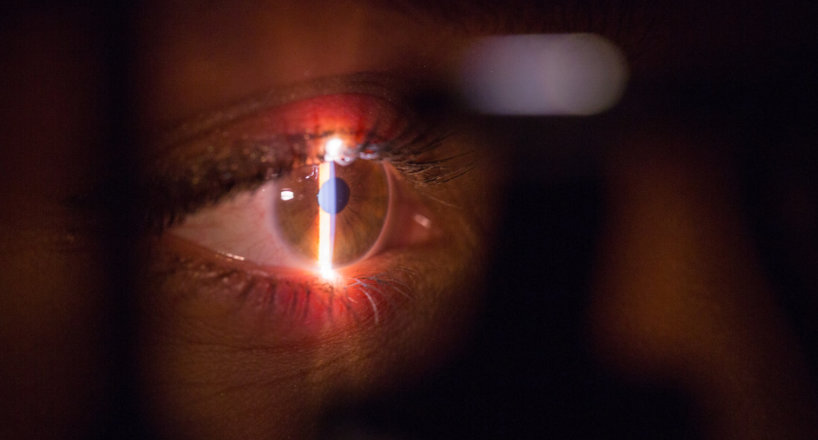Retinoscopy: An Essential Eye Exam Technique
A retinoscope is a handheld device used by eyecare professionals to determine whether your eyes are “20/20,” or have difficulties in seeing things up close or far away.
Retinoscopy is a diagnostic technique used by eye care professionals to determine the refractive error of a person’s eyes. It is performed using a handheld device known as a retinoscope, which projects a beam of light into the eye and allows the eye doctor to observe the reflection of that light from the retina. The information gathered from retinoscopy can be used to determine the prescription for eyeglasses or contact lenses, or to monitor changes in a person’s vision over time.
Retinoscopy is a quick, non-invasive, and painless exam that can be performed on people of all ages, including children. It is an essential component of a comprehensive eye exam and can provide valuable information about a person’s eye health and vision. Eye care professionals often use retinoscopy in combination with other tests, such as visual acuity tests and eye muscle tests, to get a comprehensive understanding of a person’s eye health.
If you’re due for an eye exam or have been experiencing changes in your vision, consider scheduling an appointment with an eye care professional who uses retinoscopy. The retinoscopy exam can provide valuable information about your eye health and help you get the right prescription for clear vision. Whether you’re a seasoned veteran of regular eye exams or are having your first eye exam, retinoscopy can be an essential tool for maintaining good eye health and vision.
How does a retinoscope work during retinoscopy?

Retinoscopy is a diagnostic technique used by eye care professionals to determine the refractive error of a person’s eyes. The retinoscopy exam is performed using a handheld device called a retinoscope, which is an essential tool for eye care professionals. But how exactly does a retinoscope work during retinoscopy? In this blog post, we’ll break down the process of retinoscopy and explain how a retinoscope is used to determine a person’s prescription for eyeglasses or contact lenses.
The retinoscopy exam begins with the eye care professional shining a beam of light into the eye using the retinoscope. The light is reflected off of the retina and back into the eye, where the eye doctor can observe the reflection. The eye care professional will then move the retinoscope back and forth, rotating the lens and changing the direction of the light beam. By observing the reflection of the light beam from the retina, the eye care professional can determine the refractive error of the eye and the amount of correction needed for clear vision.
The retinoscope is equipped with a dial that allows the eye care professional to change the strength of the light beam, as well as a small prism that can be rotated to change the direction of the light. These adjustments help the eye care professional to get a more accurate assessment of the eye’s refractive error.
In addition to determining the prescription for eyeglasses or contact lenses, retinoscopy can also be used to monitor changes in a person’s vision over time. By repeating the retinoscopy exam at regular intervals, the eye care professional can see how a person’s vision has changed and make any necessary adjustments to their prescription.
In conclusion, retinoscopy is a quick, non-invasive, and painless exam that is performed using a retinoscope. The retinoscope projects a beam of light into the eye, and the eye care professional can observe the reflection of that light from the retina to determine the refractive error of the eye and the amount of correction needed for clear vision. Whether you’re a seasoned veteran of regular eye exams or are having your first eye exam, retinoscopy can be an essential tool for maintaining good eye health and vision.